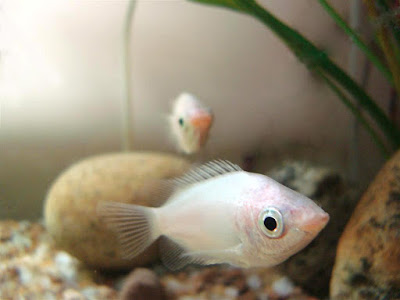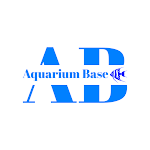Kissing gourami is a great beginner fish and are known for a “kissing” behavior. It will tolerate a range of water conditions...
Kissing gourami, also know as Kissing fish, Kissers and its scientific name Kissing gouramis, is a great beginner fish and are known for a “kissing” behavior. It will tolerate a range of water conditions, compatible with most tank mates, and will eagerly take most foods. This species is locally popular as a food fish, and internationally popular in the aquarium trade from captive bred sources.
KISSING GOURAMI - HELOSTOMA TEMMINCKII DESCRIPTION
Kissing gourami is widely distributed in southeast Asia. This species has been introduced to Irian Jaya, Papua, Singapore and the Philippines. They are usually found in slow moving, heavily vegetated waters including rivers, canals, swamps, lakes and ponds.
Helostoma temminckii has typical body of gourami. The most identifying feature is its mouth. Rather than a forward-facing or upward-facing mouth, these fish have a mouth that protrudes forward. This species can reach a maximum of 40 cm in total length and live to 7 years in captivity and up to 25 years in the wild. Colour forms include the commonly seen pink, along with marbled and wild green forms.
A short bodied mutation is relatively new and very popular. The shorter body gives it a balloon-like appearance, which is sought after in many countries. This mutated strain is not as hardy as the naturally occurring varieties, and has a shorter lifespan.
Sexual dimorphism is minimal as both sexes look almost identical. Females will be slightly larger around the midsection, when mature.
This species will appear to lock jaws in a ‘kiss’ at random times. Scientists still aren’t sure of the true purpose of this behaviour, although it’s believed to be related to their complex hierarchy. It is thought that males will lock jaws to find their place within the group. This is supported by the fact that we see a reduction in the frequency of the kissing behaviour with age, as the desire to conquer mating territories diminishes.
Several studies of this species described the particular characters which differ from other fish groups such as visual sensitivity, hearing ability, meristic and morphometric characteristics, accessory breathing organ or labyrinth, genetic diversity, color change of skin, food and feeding habits, and functional morphology of head.
KISSING GOURAMI - HELOSTOMA TEMMINCKII CARE
Kissing gourami need the tank of minimum 50 gallons with water temperature of 24-28 °C, pH level of 6.8-7.8 and general hardness of 100-200 ppm. They are quite hardy and even do well in low-oxygen environments.
This species is notorious for eating delicate plants down to the stem. Plastic plants are good for providing shelter and security if you don’t want to worry about damage. These fish may be useful as algae eaters to control algae growth. To prevent digging and to present enough surface area for algae growth, the substrate should consist of large-diameter gravel and stones.
Helostoma temminckii are suited to community tanks with medium to large size fish. As they can be aggressive towards smaller species they should not be kept with small fish unless there is sufficient space. They have been known to occasionally rasp the sides of other fish, including other kissers. This may remove their slime coat and potentially damage their scales. (This behaviour is not common.)
These fish are easy to feed and will accept a variety of foods, including pellets, flakes and frozen. Their diet should primarily consist of foods high in vegetable matter; products with spirulina listed in the ingredients are advised. Because they require plant matter in their diet, the use of sturdy live plants such as Java Fern (Microsorum pteropus) is recommended.
KISSING GOURAMI - HELOSTOMA TEMMINCKII SPAWNING
Kissing gourami are oviparous and dioecious and have external fertilization. In aquarium, the temperature should be higher to mimic the fish’s natural spawning season, which is from May to October in Thailand. Keep the water on the softer side, too.
Since they are open-water egg scatterers, the females initiate the spawning process. Spawning begins by circling which progresses to nudging and dancing. This is followed by an intense beating of tails. Eventually, the male wraps his body around the female, turning her upside down. The female will release hundreds or even thousands of eggs which are fertilized by the male as they rise to the surface. Spawning usually takes place under the cover of floating vegetation. Once the eggs are released, unlike other fish, the adults do not guard them.
The eggs hatch after one day, and the fry are free-swimming two days thereafter. Prepare infusoria for the fry to eat once they hatch. As soon as the babies are free swimming, you can start feeding them finely crushed fish flakes and micro-worms.
BUY KISSING GOURAMI - HELOSTOMA TEMMINCKII AND RELATED PRODUCTS














COMMENTS